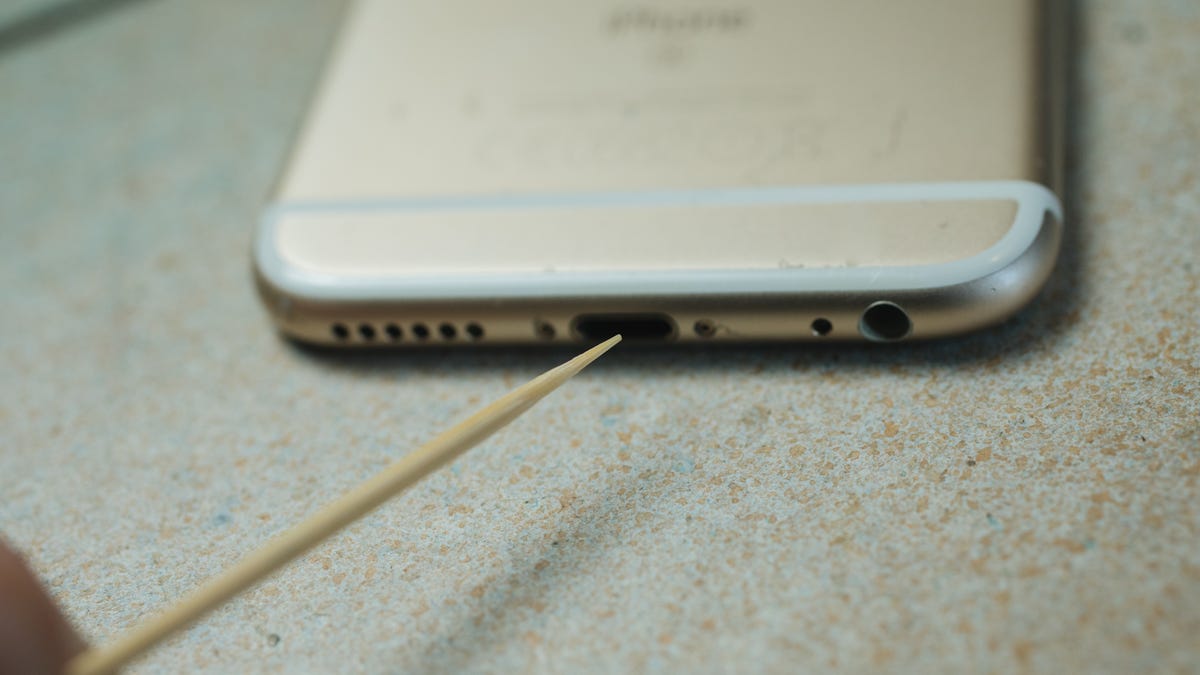Everywhere you look on TikTok and Instagram, there’s an influencer trying to push a new trend of some kind. In the wellness and fitness space, it’s often a new diet trend or a workout that the influencer swears helped tone up their body in 30 days. Or my favorite, the influencer walking around the supermarket aisles (sometimes shirtless) pointing out how everything you’re eating is killing you and how you should swap it for the item they’re selling instead. It may seem harmless to some to consume this type of content, but for others struggling with body image issues, recovering from eating disorders and even impressionable teens and pre-teens, it can have a more negative effect.
What makes this type of content more alarming is that it’s usually misinformation spread on platforms with large followings and by followers who trust the influencer and share their content. As a result, the internet gets filled with mixed messages about what’s true, false or an exaggerated claim.
Unfortunately, it’s hard to expect the average user to be able to decipher what is true from falsehood on social media when the same message is being shared over and over again. We spoke with experts in the wellness and fitness field on trends they want to de-influence as well as how to be able to spot false claims on social media.
The trends to de-influence
Food-restrictive diets and cleanses
You’ve probably seen influencers pushing the keto and carnivore diet on social media. Although the keto diet has been shown to help patients with epilepsy, it isn’t necessarily the best approach for everyone to follow. Popular diets like keto and the carnivore diet focus on eliminating or limiting food groups like carbohydrates. “Very restrictive plans that totally eliminate food groups can lead to an unhealthy relationship with food and a very restrictive eating pattern,” warns Brittany Werner, a registered dietitian and director of an online nutrition coaching program at Working Against Gravity.
Additionally, when you get rid of a whole food group, you put yourself at risk of nutritional deficiencies and digestive issues that occur because of an unbalanced gut microbiome. Diets like these are not sustainable in the long run and can lead to binge eating and increased cravings. “We should aim to eat a balanced diet with whole foods from all food groups like fruits, vegetables and whole grains to provide our body with vital micronutrients,” says Werner.
By now, you probably know that cleanses and detoxes aren’t recommended, but these methods are still being pushed. “Our bodies are naturally highly effective at eliminating waste and toxins, since the liver is the main filter for our body and breaks down toxins so they can be eliminated,” explains Werner. The kidneys also work as a filter system to catch and eliminate any additional waste through our urine.
“Often, cleanses or detoxes involve extreme measures such as drastic calorie restriction and diuretics that make you more susceptible to severe nutritional deficiencies and digestive issues,” Werner warns. Additionally, there is little peer-reviewed scientific research to back the effectiveness of any cleanse or detox. Instead, Werner advises following a balanced diet full of protein, fruits and vegetables to support your body’s natural detox system.
Dr. Will Bulsiewicz, the U.S. medical director at science and nutrition company ZOE, tells CNET that he’s observed parasite cleanses trending on TikTok. “According to TikTok, everyone has parasites and these parasites require a concoction of various supplements and concentrated herbs in order to eradicate,” he says. “Yet, as I sit here as a gastroenterologist, I’m left asking, ‘If everyone has parasites, why am I not detecting them on tests?’”
Bulsiewicz says he’s run hundreds of parasite tests through the years and remembers two instances when the test results were positive for parasites. “We live in a hyper-sterile society, so everything has been cleaned, scrubbed of any dirt or natural material and coated with chemicals to double- and triple-verify its cleanliness,” he explains. As a result, he points out that parasites are on the decline in the Western world. If you suspect you have parasites, make sure to see a professional to get properly evaluated instead of following an unlicensed influencer’s advice on social media.
"Earning food" by going to the gym
You’ve probably heard or said once before after a big meal that you need to burn off said calories. Believe it or not, the majority of our daily calorie burn does not come from a workout session or fitness class. “We’re burning far more calories walking, standing, climbing stairs, cooking and doing our daily acts of life than we do in our workouts,” explains Werner. That’s why thinking you can earn your food by burning off calories at the gym is flawed.
The gym offers benefits that go beyond burning calories. Instead, your daily workout should be used for muscle building and improving both your cardiovascular and mental health.
Protein Diet Coke and similar trends
You’ve probably seen the protein diet coke trend making the rounds across TikTok lately. With protein having a moment in the spotlight right now, it seems that people are constantly trying to find ways to sneak it into their diet -- even if it is in carbonated form. According to Bulsiewicz, he can see why people would combine Diet Coke and protein shakes. “It makes sense, but as a gastroenterologist, what I see is a recipe for bloating and diarrhea because, at baseline, both drinks have ingredients known to trigger these symptoms,” he explains.
For example, Diet Coke has artificial sweeteners and carbonation, while the protein shake has protein isolates and usually has lactose from dairy. You should be mindful of that if you have a sensitive stomach and plan on trying social media trends such as this one.
Fearmongering fitness advice targeting women
One popular fitness stigma that seems to remain despite plenty of debunking is that lifting weights will make you bulky. The same thing applies when you see some Pilates content pushing the narrative that you’ll build long and lean muscles -- when the reality is that you can’t change the length of your muscles. Miriam Fried, founder and head trainer at MF Strong in NYC, says that she’s also observed different forms of fearmongering based on hormonal health. “Fitness professionals without proper credentials are selling generic hormone balancing or menstrual cycle-syncing workouts, and women are being told they can only do low impact or intensity workouts.”
Dr. Anne Hussain, a naturopathic doctor and author of "The Period Literacy Handbook,” agrees and says the cycle-syncing, low-movement trend has gotten out of hand. She says there needs to be more encouragement for women and menstruators to move more by doing cardio and resistance training. “It's a disservice to people to tell them to not engage in formal exercise for one to two weeks per month -- that adds up to three to six months of the year!” she says, adding, “Instead, we need to make sure people are fueled well and get the support for any disruptive hormone-based symptoms so they can feel well and move more.”
Vibration plates and other fitness shortcuts
If you’ve seen an uptick of fitness influencers pushing vibration plates in replacement for traditional workouts, you may want to think twice. Mike Julom, an ACE-certified personal trainer and founder of ThisIsWhyImFit.com, says vibration plates are not the magic fix people think they are. “Social media makes it look like standing on one or doing a few simple moves is enough to burn fat and build muscle, but studies show that’s not how it works,” he explains. He points out that just standing or doing some exercises on the vibration plates is not going to build muscle or burn calories similar to lifting weights or doing cardio.
“They do have benefits like improving balance or helping blood flow, but it’s not enough if someone’s goal is to lose weight or get stronger,” Julom says, adding, “It’s mostly just a shortcut that doesn’t really pay off.” The truth is, if you are looking to lose body fat or build muscle, you will need to put in the work by strength training and doing cardio instead of relying on a vibrating plate or similar shortcut. This applies to any other trend you see on social media trying to push the idea that one piece of workout equipment is the magic fix to weight loss or to achieve a certain aesthetic.
Avoiding cortisol-spiking exercises
If you’ve been on FitTok lately, you’ve probably seen some fitness influencers talking about the dangers of doing workouts that cause your cortisol levels to spike. Cortisol is known as the “stress hormone", and it is released during high-intensity exercise or when you’re in “fight or flight” mode. Although too much cortisol isn’t good for you, FitTok takes it to the next level by fearmongering around workouts like HIIT.
Hussain says you shouldn’t rule out high-intensity exercise because it has plenty of benefits. “High-intensity exercise is immensely helpful for cardiovascular health, and we should be engaging in cardio and resistance training both to reap the overlapping and distinct benefits from each,” Hussain says.
Additionally, she points out that exercise helps with long-term cortisol regulation and supports mental health. Instead of adding barriers and discouraging people from engaging in high-intensity exercise, she advises influencers to encourage it since most people don’t meet the minimum exercise guidelines -- 150 minutes of moderate-intensity physical activity per week for adults.
The problem with these fitness and wellness
These are just some of the many fitness and wellness trends seen across TikTok that spread misinformation and confusion to users. Some may seem harmless, but the problem is more so with the ones that could potentially harm those who try to copy the trend. Nutrition misinformation can lead to unhealthy eating habits, nutrient deficiencies and other chronic health problems. Werner points out that it can also negatively impact our mental health.
“Misinformation and click-bait nutrition advice often target vulnerable populations that are desperate for help with their health and nutrition,” she says. As a result, these groups are more easily influenced by these unrealistic promises and fad diets. Additionally, misinformation tied to food and nutrition can often lead to guilt and fear surrounding eating. “Unsustainable plans can lead to binge eating and long-term body image and self-esteem issues,” Werner warns.
When it comes to fitness, women specifically are faced with contradicting messages about what they should or shouldn’t be doing in the gym. Fried says, “As a whole, women are an undertrained population -- we get less activity across the span of our lifetimes than men.” As a result, this makes women more susceptible to osteoporosis (bone density loss) and sarcopenia (muscle loss) as they age, which puts them at higher risk of falling, getting injured and developing certain diseases.
“Exercise and strength training specifically can literally be life-changing and life-saving for women, so it can be incredibly frustrating as a fitness professional to see trends that further alienate women from training,” explains Fried.
How to tell what's true or false on social media
Viewing posts, reels and videos on social media can seem like an echo chamber since you’re seeing the same information shared over and over again. You assume it must be true because it’s getting reposted by people you’re following and others. There’s also content that can contradict it as well. It only makes it harder to decipher what's true from fiction if nothing is being verified. So, how can you use your best judgment?
Bulsiewicz says it's time to start challenging these influencers by asking them for evidence to support their claims. “If we want to discern truth, then we should be able to bring our information back to our gold standard source of truth, which is evidence -- and TikTok is all about hacks,” Bulsiewicz points out. By asking influencers for the evidence, it will give you a better idea if they know what they’re talking about.
“If they point you to blog posts, other TikTok videos or a YouTube video, then they are simply regurgitating information that they found on the internet, contributing to the echo chamber and in my opinion, they’ve lost all credibility,” Bulsiewicz says. If they instead share a study to support their claims, Bulsiewicz says there are a few things to look out for with those sources. “If they point you to a research article, but it’s a test tube or a rat study, it’s not good enough because you don’t exist in a test tube, nor are you a rat.” Instead, he advises that the studies should be backed by human research, especially if you’re going to be doing something that affects your health.
“I think, ultimately, knowledge is power by finding quality sources of information we trust that can help arm us against misinformation when it sneaks up on our newsfeed,” says Fried. “I also think when it comes to fitness and health claims, approaching with a certain level of skepticism is important because anyone can claim anything.”
Bulsiewicz believes that what we consume on social media is a matter of personal responsibility. “You as an individual are under no obligation to accept what is presented to you, and I think we are far too quick to trust any and every thing that we hear from a social source.” Instead, he advises learning to discriminate and reject things that, from a common sense perspective, are nonsensical.
“We must learn to identify sources of truth and identify true experts who earn our trust because, at the end of the day, our health is one of the most valuable commodities that we have,” Bulsiewicz concludes.
Final thoughts
Social media can be like the wild, wild west with all the information at your fingertips, but it’s important to approach it all with caution. If it seems too good to be true or promises that you’ll see a bodily difference in a matter of days by making a specific change, it’s most likely an exaggeration or a lie. If you’re uncertain about any information you spot on social media, speak with an expert offline who can better answer your questions and speak to the post's validity.







:quality(85):upscale()/2024/10/31/831/n/49351773/b7bf33836723d2f0643c55.51137847_.jpg)

 English (US) ·
English (US) ·